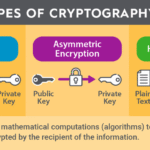Cryptography serves as a double-edged sword in the realm of cybersecurity, acting as both a shield against nefarious activities and a tool for malicious actors. In an increasingly interconnected world, understanding how cryptography relates to hacking illuminates the ongoing battle between protectors and attackers in the digital landscape. This narrative draws not only from the fundamental principles of cryptography but also the intricate tactics employed by hackers.
At its essence, cryptography is the science of encoding and decoding information to keep it secure from unauthorized access. By transforming plain text into coded versions, cryptography ensures that only intended recipients can read the data. However, how does this secure mechanism hold up against the ever-evolving strategies of hackers? This brings us to a pivotal question: Is cryptography genuinely irreversible, or can determined adversaries always find a way in?
The crux of modern cryptographic systems largely lies in the use of algorithms, which fundamentally determine how data is encrypted and subsequently decrypted. Symmetric and asymmetric encryption are two primary categories that exemplify the contrasting approaches. Symmetric encryption uses the same key for both encryption and decryption, presenting a potential vulnerability. If the key falls into the wrong hands, the system becomes susceptible. Conversely, asymmetric encryption employs a pair of keys—public and private—which adds layers of complexity, rendering it significantly harder for hackers to break the code without the private key. However, as cryptography advances, so do the cybercriminals’ capabilities.
Consider the technique known as brute force attacks. In this scenario, a hacker attempts to crack the encryption by systematically guessing the encryption key until finding the right one. As computational power increases, the feasibility of this approach grows more plausible, leading many experts to advocate for longer and more complex keys. However, does complexity necessarily equate to security? As we delve deeper, it becomes evident that the balance between usability and security is often compromised in the quest for enhanced protection.
Hashing, another significant aspect of cryptography, deserves mention as well. This one-way function transforms input data into a fixed-size string of characters, which serves as a digital fingerprint of the original information. Without the capability to reverse the process, hashing focuses on verifying the integrity of data rather than its confidentiality. Nonetheless, despite its inherent security features, hashing remains vulnerable to various attacks, including hash collisions, where two distinct inputs yield the same hash output. This revelation underlines a crucial insight: cryptography, while fortified by complex mathematics, is not impervious to exploitation.
When discussing hacking, it’s crucial to differentiate between ethical and unethical practices. Ethical hackers, often referred to as “white hat” hackers, use their skills to identify vulnerabilities within systems. Their actions are akin to a fire drill, revealing weaknesses before malevolent “black hat” hackers exploit them. The effectiveness of ethical hacking is arguably fortified by cryptographic principles, as they employ similar techniques to fortify systems against potential breaches.
However, the existence of hacker groups that rely on cryptography to obscure their activities poses a significant challenge. By encrypting their communications and utilizing anonymity networks like Tor, these individuals enhance their operational security, complicating the task of law enforcement agencies. They can orchestrate elaborate attacks or data breaches while remaining cloaked from detection. As a result, a sort of arms race ensues, where both cryptographers and hackers continually adapt to outsmart one another.
Furthermore, recent developments in quantum computing propose a radical shift in the landscape of cryptography. If realized, quantum computers would possess the ability to solve problems in seconds that current classical computers would take millennia to crack, effectively rendering current encryption standards obsolete. This looming threat poses a critical question for the cybersecurity community: how should we evolve our cryptographic methods to thwart an impending quantum revolution?
Advancements in post-quantum cryptography aim to develop algorithms resilient to quantum attacks, yet this does not eliminate the existing vulnerabilities in current systems. It prompts another question—how much trust can one place in technology that is in a constant state of flux? As the intricacies of cryptography intertwine with the ever-evolving tactics of hackers, the need for continuous education and adaptation becomes paramount.
In conclusion, while cryptography serves as an essential mechanism for safeguarding information, its relationship with hacking encapsulates a complex dynamic of cat and mouse. The duality of its application can reinforce security or enable exploitation, illustrating the significance of maintaining a vigilant stance in the fight for cybersecurity. As technology advances and cyber threats grow more sophisticated, understanding this interplay becomes crucial in devising effective strategies for digital protection. The ongoing evolution of cryptography necessitates not only innovation but also a commitment to ethical practices. Will the light side of the code ultimately prevail over the dark? Only time will tell in this relentless digital battleground.









Leave a Comment